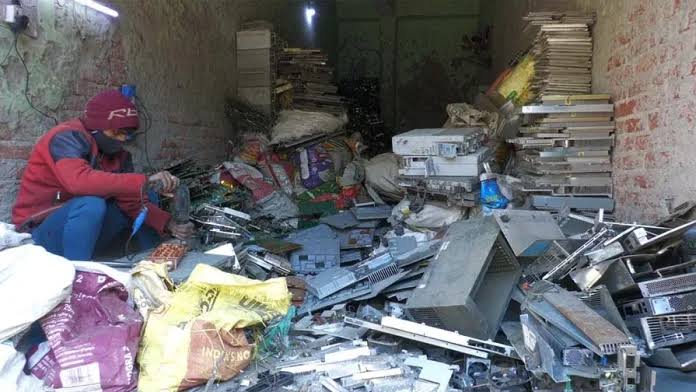 Image Source: Swadesi
Image Source: Swadesi
In the narrow alleys of New Seelampur, Delhi's storied e-waste bazaar, the clang of hammers and the hiss of stripped wires have gone silent—but the junk electronics business is anything but dead. As India cracks down on e-waste and enforcement agencies increase vigilance, Seelampur's once-thriving market has splintered, gone underground, and spilled over into satellite towns like Loni, Muradabad, and Meerut.
Key Highlights:
E-Waste Economy Goes Underground: The disorganized e-waste market, localized in Seelampur, has spread to small towns, operating in the background but unchecked in size. The trade remains well established, with the traders now depending on clandestine telephone transactions rather than open market transactions.
Continuing Health and Environmental Hazards: Despite legislation, workers—children and women too—continue to disassemble and incinerate electronics by hand, exposing them to toxic chemicals like lead, mercury, and cadmium. Few people use protective gear, and the daily earnings never exceed ₹500–₹1,000 per household.
Policy Loopholes and Loopholes in Enforcement: India's E-Waste Rules (2022) attempted to formalize recycling and assign responsibility to producers, but the enforcement is patchy. Only about 5% of e-waste is formally recycled; the rest of the e-waste is handled by informal operators in unsanitary conditions, undermining the environmental purpose.
Untapped Economic Potential: India's e-waste contains about $6 billion of recoverable material. Formalization would create thousands of green jobs and decrease reliance on imported metals, but the informal chain still overwhelms due to the absence of infrastructure and training.
Children at Risk: Nearly 50,000 workers, a majority of whom are children, labor in the industry, sifting through poisonous waste for paltry wages. Acid baths and burning are common procedure, resulting in chronic health issues and contamination of the environment.
Call for Inclusive Reform: Experts stress that informal workers must be brought into formal systems, provided with training, and covered by protective standards. Until the gap between policy and practice on the ground is bridged, the shadow economy will persist, with risks borne by society's most disadvantaged.
"There is a trade, it just doesn't occur in Delhi anymore. All the players in the chain do take something, even if it is small."
— Vinod, Toxics Link
Source: Hindustan Times
Advertisement
Advertisement




